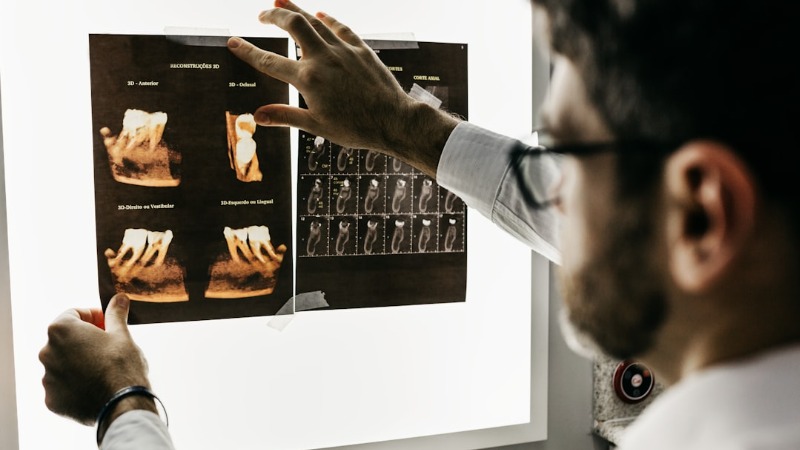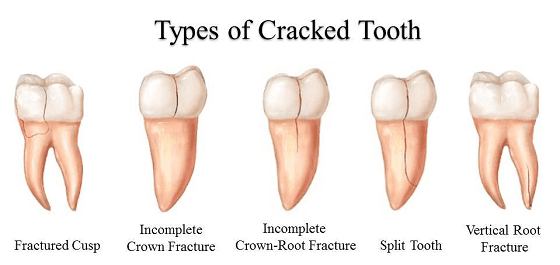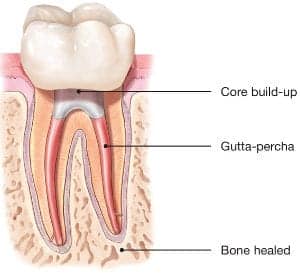
When Should a Broken Tooth Be Extracted?
When to Consider Tooth Extraction for a Broken Tooth
Contents [show]
It’s a common misconception that broken teeth inevitably require extraction. However, with advancements in dental treatments, most broken teeth can be effectively repaired by a general dentist. Modern dentistry offers innovative options that make saving a broken tooth more feasible than ever.
Types of Cracked Teeth
The type of crack a tooth has can significantly affect the treatment approach and whether or not the tooth can be saved. The main types of cracks include:

- Craze Lines: These are tiny cracks that only affect the outer enamel. They are common in all teeth and usually do not cause pain.
- Fractured Cusp: This type of crack typically occurs around a dental filling. It doesn’t usually affect the pulp of the tooth, so it might not cause much pain.
- Cracked Tooth: This crack extends from the chewing surface down towards the root. Early diagnosis is crucial for saving the tooth, as the crack can worsen over time.
- Split Tooth: This is a tooth that has cracked into two separate pieces. Depending on the position and extent of the split, at least part of the tooth may be saved.
- Vertical Root Fracture: These cracks begin in the root and extend towards the chewing surface. They often show minimal symptoms and are discovered when the surrounding bone and gum become infected.
Saving Broken Teeth: Root Canal Therapy
In many cases, a broken tooth can be preserved through root canal therapy. This procedure involves removing the infected or damaged pulp from inside the tooth, cleaning and disinfecting the area, and then filling and sealing it to prevent further infection. Root canal therapy is often successful in stopping the spread of infection and alleviating pain, making it a preferred method for saving a tooth that might otherwise be lost.
How Root Canal Therapy Saves a Tooth
Root canal therapy is a dental procedure that can save a damaged or infected tooth, preventing the need for extraction. Despite the common perception that a tooth treated with a root canal is “dead,” this procedure plays a crucial role in preserving the tooth’s structure and functionality.

The Misconception of the “Dead” Tooth
The notion that a tooth becomes “dead” after a root canal is based on the misunderstanding of what constitutes a tooth’s life. A tooth is considered “alive” due to the presence of pulp tissue, which contains blood vessels and nerves. When a tooth undergoes root canal therapy, the infected or inflamed pulp is removed, effectively eliminating the tooth’s ability to sense stimuli such as hot, cold, or pain. However, the tooth itself is not “dead”; it is devoid of its nerve and blood supply but remains integrated into the jawbone, supported by the surrounding tissues, and can continue to function like any other tooth.
Preserving the Tooth Structure
Root canal therapy involves removing the damaged inner pulp, cleaning and disinfecting the hollow area, and then filling and sealing it to prevent re-infection. This process eliminates bacteria and infection from the tooth’s internal structure, preserving the tooth’s integrity. By removing the source of the infection and sealing the tooth, root canal therapy prevents further decay and damage, allowing the tooth to remain in place.
Benefits of Root Canal Therapy
- Infection Control: Root canal therapy stops the spread of infection within the tooth and prevents it from spreading to neighboring teeth or the jawbone.
- Pain Relief: By removing the infected or inflamed pulp, root canal therapy significantly reduces or eliminates pain.
- Functionality Retention: A tooth treated with a root canal can function like any other tooth, supporting healthy biting and chewing.
- Aesthetic Preservation: Since the tooth is preserved, it maintains the natural appearance of the smile. A crown or filling can further restore the tooth’s shape and look.
Post-Procedure Tooth Life
After a root canal, the tooth is restored with a filling or crown to protect it and restore its function. Although the tooth no longer contains pulp tissue, it is not considered “dead.” The tooth continues to be nourished by the tissues surrounding it, allowing it to remain functional and healthy within the mouth. The absence of the nerve tissue means the tooth will no longer feel temperature changes or pain, but it does not affect the tooth’s ability to contribute to the overall mechanics of chewing and biting.
Reconstructing the Tooth Post-Therapy
Following root canal therapy, tooth reconstruction is typically necessary to restore the tooth’s function and appearance. The standard approach involves placing a dental crown over the treated tooth. Dental crowns are custom-made to fit over the existing tooth structure, providing full coverage restoration. When crafted and applied correctly, a crown can restore a broken tooth to nearly its original strength, especially in the case of posterior (back) teeth.
Exceptions to the Rule: When Extraction Is Necessary
Despite the effectiveness of treatments like root canal therapy and dental crowns, there are instances where a tooth cannot be saved and must be extracted. This is usually the last resort, considered only when the tooth is deemed beyond repair. Extraction may be necessary to prevent further pain, stop the spread of infection, and avoid complications that could affect overall health.
These exceptions generally fall into a few categories:
Extensive Decay or Damage
If a tooth is severely decayed or damaged and there is not enough healthy tooth structure remaining to support a restoration like a crown, extraction may be necessary. In such cases, the integrity of the tooth is compromised to the point where restorative procedures would not be viable or successful in the long term.
Advanced Periodontal Disease
Periodontal disease affects the gums and the bone that supports the teeth. In its advanced stages, it can lead to the loosening of teeth. If a tooth is significantly loosened by the loss of supportive tissue and bone, it may not be possible to save it with root canal therapy or other treatments.
Fractures Extending Below the Gum Line
A tooth with a crack or fracture that extends below the gum line into the root is often difficult or impossible to treat successfully. Such fractures can allow bacteria to invade the tooth, leading to infection that cannot be adequately addressed with root canal therapy.
Failed Previous Treatment
Occasionally, a tooth that has undergone root canal therapy may not heal as expected, or it may become reinfected. While retreatment is an option in some cases, if the tooth continues to be a source of pain or infection despite attempts to save it, extraction may be considered the best course of action.
Key Considerations for Broken Teeth
- Root Canal Therapy: A primary method for saving broken teeth, aimed at removing infection and preserving the tooth’s structure.
- Dental Crowns: Used post-root canal therapy to fully restore the tooth’s function and appearance, making it a critical step in the treatment of broken teeth.
- Tooth Extraction: Considered only when a tooth is beyond repair, to prevent further pain and potential health issues.
FAQs on Broken Tooth Treatment
Can all broken teeth be saved?
While many broken teeth can be saved with the right treatment, such as root canal therapy followed by crowning, some severely damaged teeth may require extraction.
Is tooth extraction painful?
Modern dental techniques and anesthesia make tooth extraction much less painful than in the past. Your dentist will ensure you’re as comfortable as possible during the procedure.
How long does it take to recover from a tooth extraction?
Recovery times vary, but most people begin to feel better within a few days. Complete healing of the gum area may take several weeks.
What are the alternatives if my tooth cannot be saved?
If extraction is necessary, there are several tooth replacement options, including dental implants, bridges, and partial dentures, to restore function and aesthetics.
With today’s dental technologies and treatments, the majority of broken teeth can be effectively saved or restored, ensuring patients maintain their oral health and comfort.

